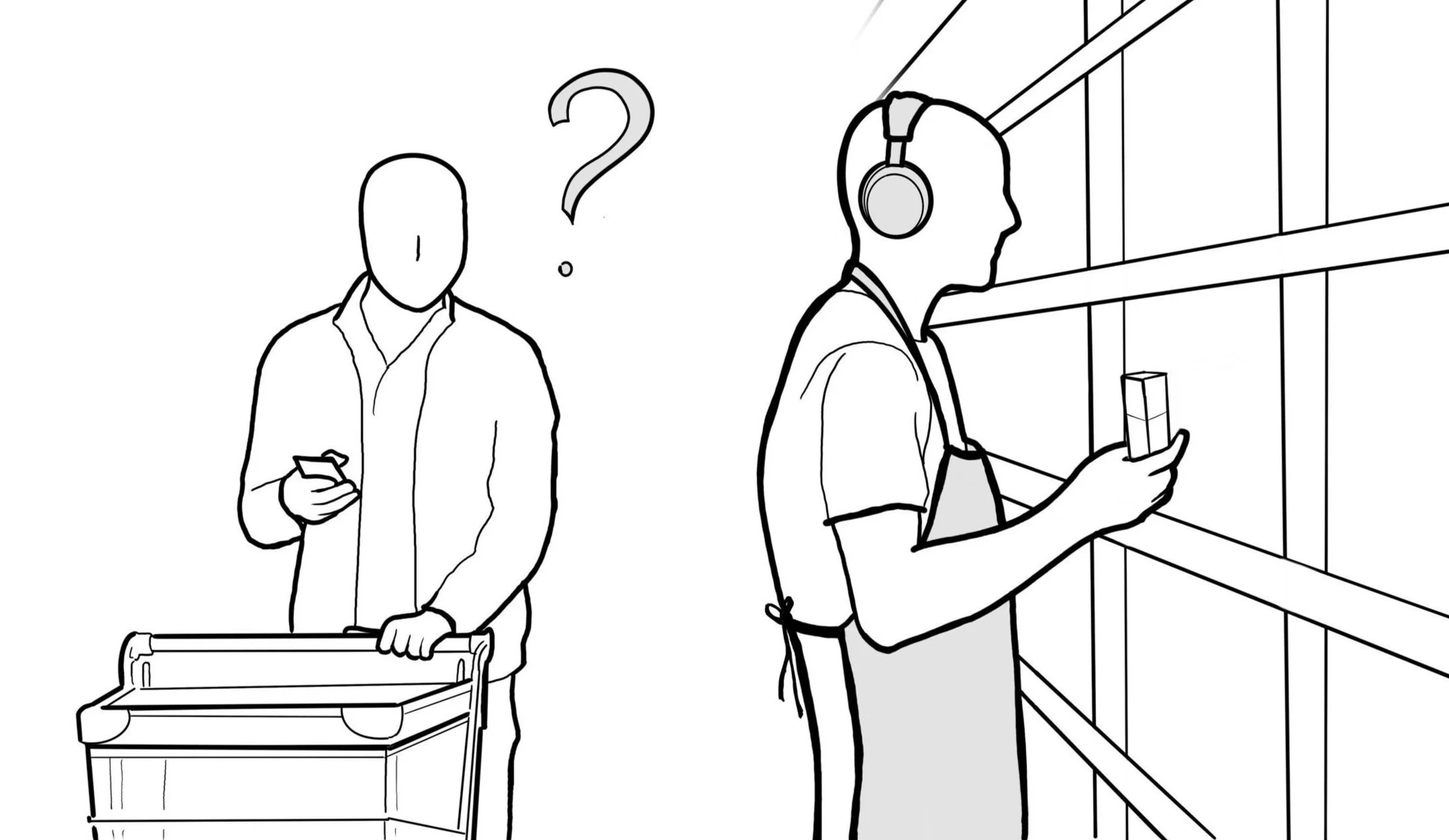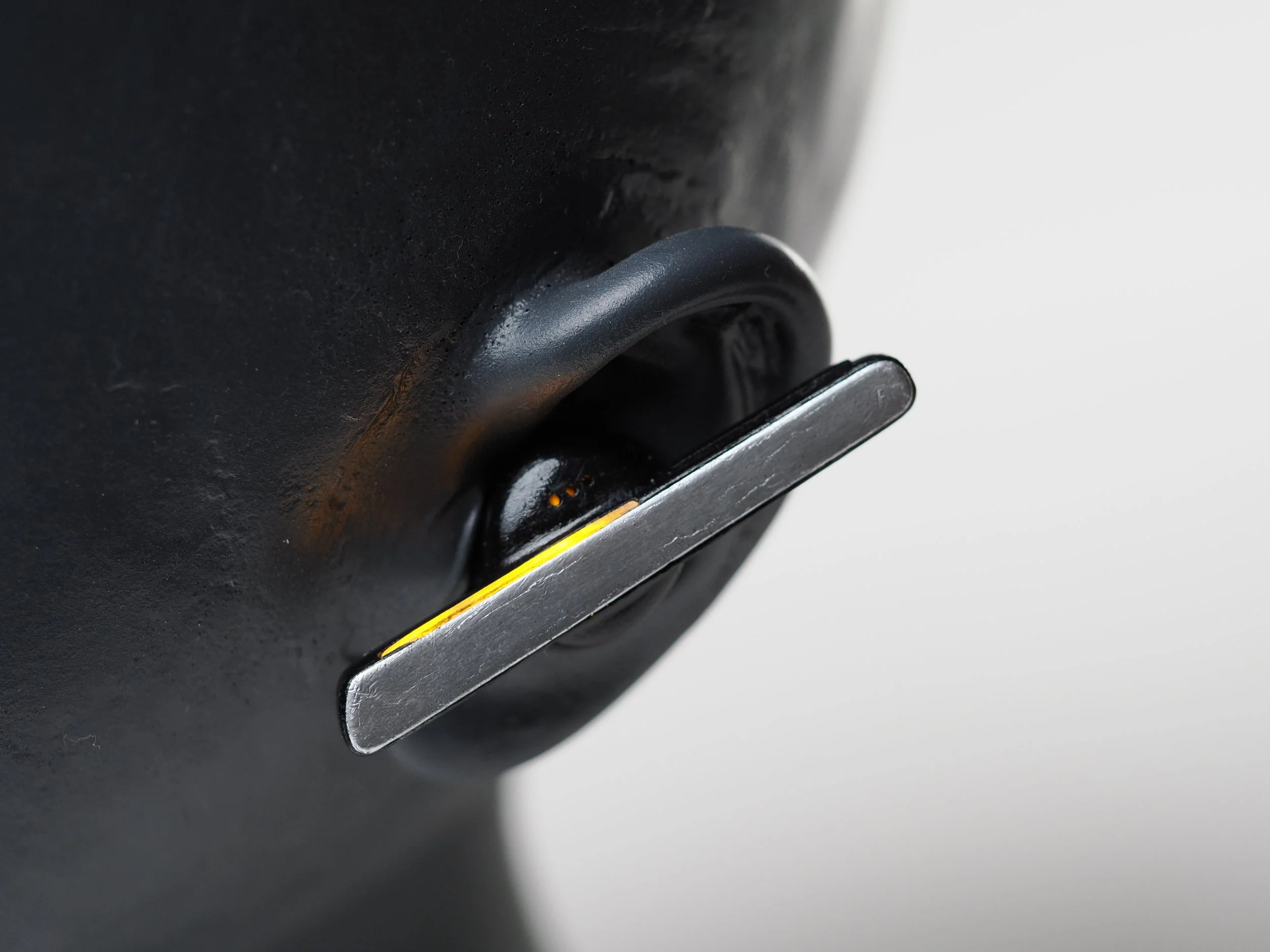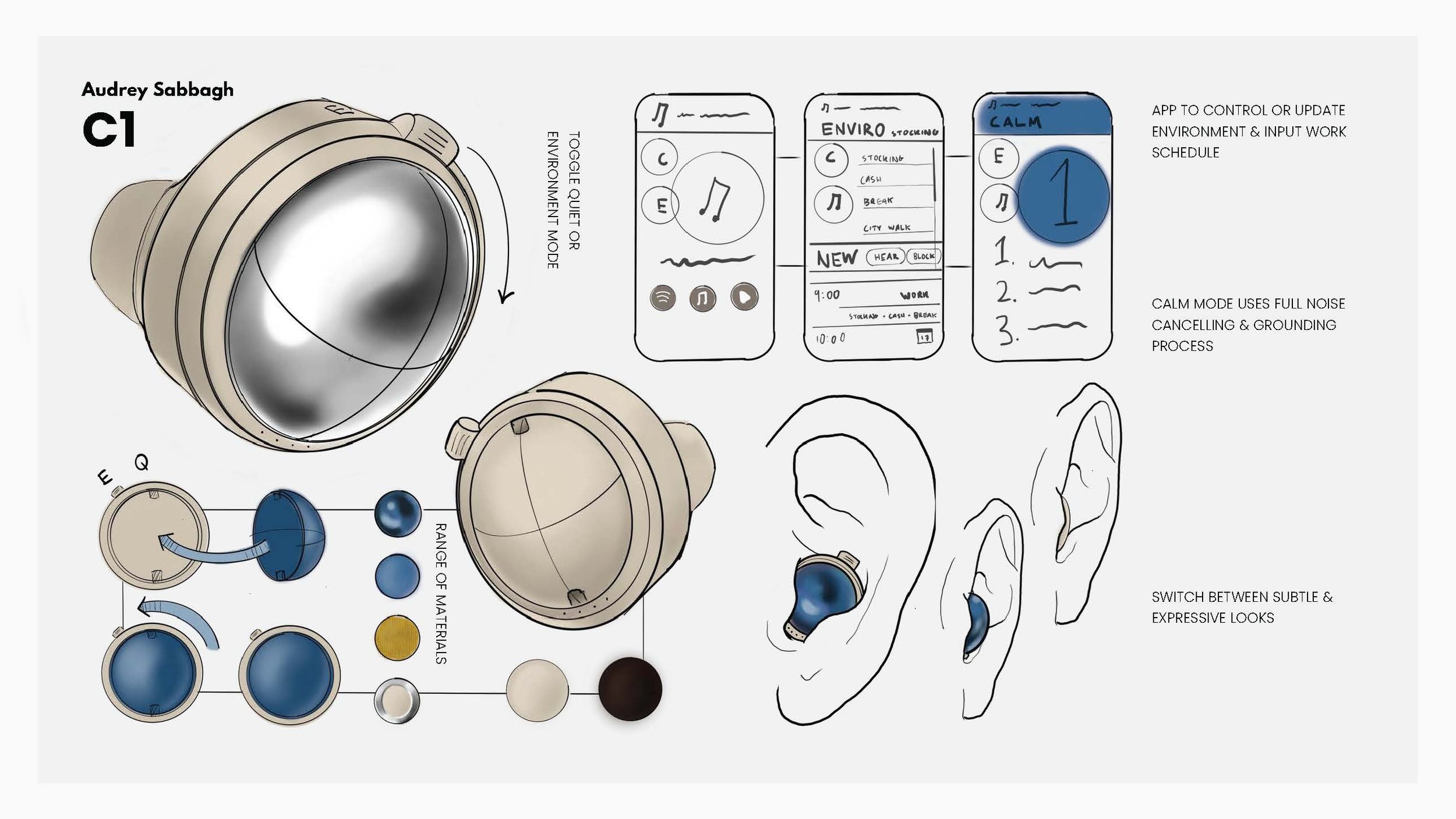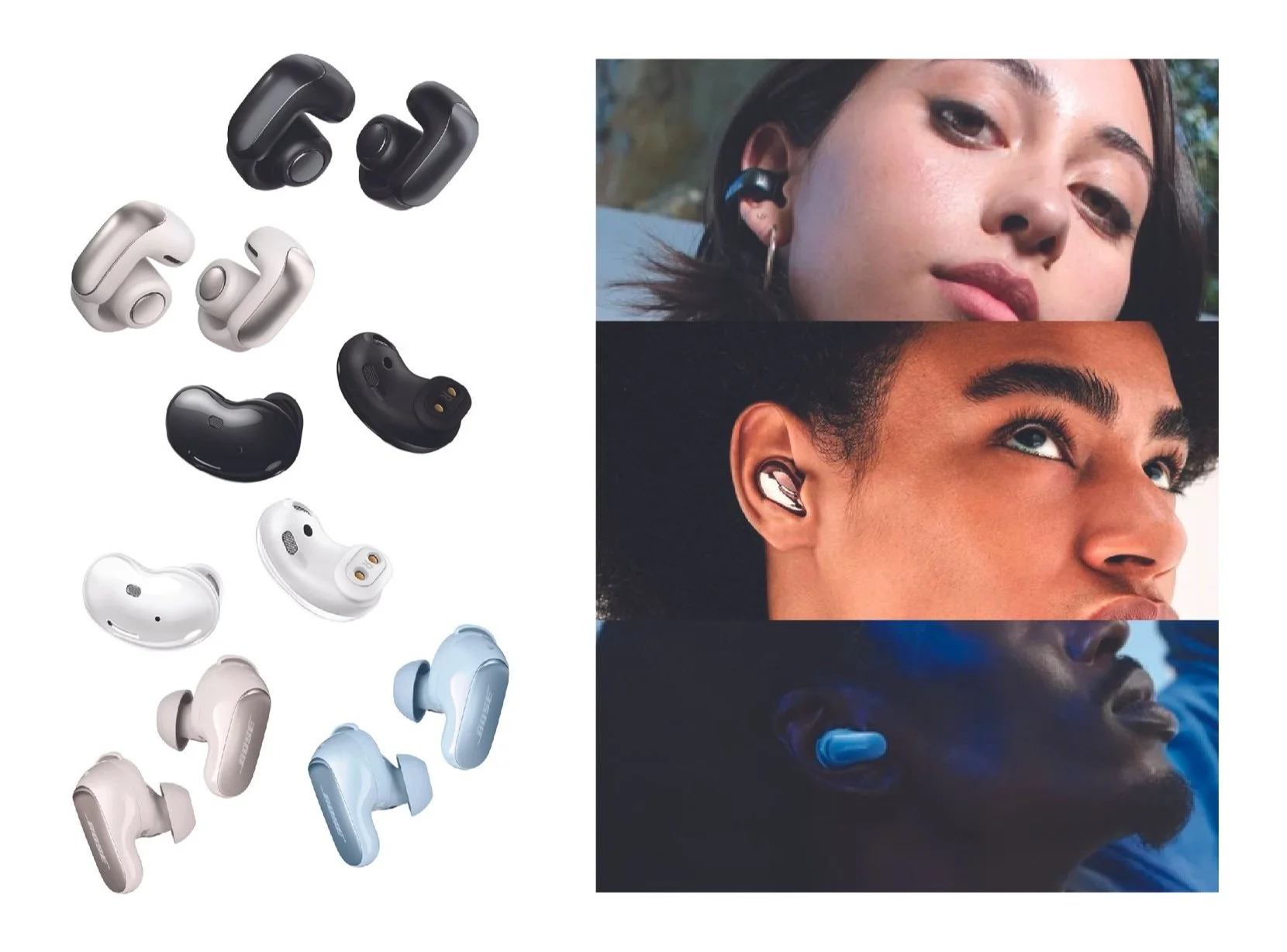
ZONE, preventing auditory overstimulation at work for autistic adults.
ZONE provides active noise cancellation without the social barrier of headphones or earbuds. As one of the challenges autistic people face in the workplace, auditory overstimulation from the work environment can hinder success. Autistic adults need tools to reduce and filter sound at work without compromising success or opportunities to engage socially.
Project duration of 24 weeks.
Cinematography by Jon Callies
The Facts
In 2017 only 33% of Canadian autistic adults were employed, compared to 79% of adults without disability. Autistic people still fear stigmatization at work and can face discrimination upon disclosure.
33%
70-100% of autistic people have trouble with auditory processing, and auditory overstimulation is commonly experienced at work. But headphones and earbuds are still perceived as antisocial.
70-100%

Preventing auditory overstimulation at work
Design Challenge
Auditory overstimulation from the work environment causes discomfort and anxiety, inhibiting success, especially in retail. But when autistic adults wear noise canceling devices on the job, they can be perceived as antisocial and inattentive by customers and co-workers.
Autistic adults need a socially acceptable active noise canceling tool to reduce and filter sound in retail work environments without compromising success.
Key Insights
Confident
A professional look helps to foster confidence in the face of stigmatization.
Comfortable
Smooth, glossy, and soft finishes are less likely to cause overstimulation.
Approachable
A professional look lets customers know they are being heard.
Stable
Device stability on the ear is key to shift-long comfort and a sense of security.
Features
While in Voice mode, ZONE filters sound to amplify voices, helping with auditory processing. While in Closed mode, ZONE’s amber indicator light turns on, letting coworkers and familiar customers know that they won’t be heard.
Interchangeable components for best fit and feel provide on-ear stability and comfort as well as options for varying sensitivity to touch.
Closed Mode
Voice Mode & Open Mode
Single flange, double flange, & foam
Hook, spacer, & band
UI
Answer Call
Reject Call/Skip Song
Enter Calm Mode
Adjust Volume
Switch Listening Mode
Pause/Play Music
Intuitive capacitive controls along the front panel of the bar adjust music, switch listening modes, and respond to incoming calls.
On the left ear, tactile buttons control the volume. On the right ear, a single button activates Calm Mode, setting the listening mode to Closed and activating the calm pathway in-app. When overstimulated, these tactile buttons can be easily used.
App & Calm Mode
Features
Adjust music and relative volume levels and personalize your Calm Mode with the ZONE app.
Calm Pathway
Steps to guide you to a safe space to ground at work when you are feeling overstimulated.
Calm Zone
A personalized grounding experience, designed to help you get back to work.
Use Cycle
Listen with Voice or Open mode
Own your ZONE
Focus with Closed mode
Find safe space: Calm Pathway
Ground: Calm zone
CMF & Style
ZONE’s professional look boosts confidence at work and invites customers to ask for help. Black, white, and silver fit in at work, and the downward angled form of the capacitive bar is familiar and approachable to customers. The amber indicator light lets customers and coworkers when it’s not a good time to talk.
Soft silicone rubber supports and a glossy ABS body make for a comfortable, low texture feel. The vacuum metalized bar gives the earbuds a personal feel and draws on current trends in earbud fashion.
Components
Market Research
Active noise cancelling with headphones and earbuds uses phase cancellation to reduce and eliminate environmental noise. This technology is most effective at reducing constant low frequency sounds, which often contribute to auditory overstimulation.
Passive noise cancellation uses physical blocking to reduce noise. These devices can be very small and are most effective for high frequency sounds and sudden noises.
Technology
Current active noise cancellation using machine learning can isolate for voices and remove background noises.
Watching a variety of teardown videos and tearing down an earbud gave me a sense of the technology required for noise cancellation.

Ideation
Initial exploration for a new active noise cancellation device included on-ear, in-ear, on-body, and in-environment ideas. Inspiration was drawn from jewelry, listening aids, and other wearables to develop a device that could be perceived differently than a standard noise cancelling earbud.
Introducing Sam
A persona, Sam, was developed based on stories from interviews with 6 mental health professionals as a tool for ideation.
22 years old
Trying to find a work environment that suits him
Stocking and facing shelves at his local grocery store
Experiences oversensitivity to subtle people and machine sounds as well as sudden loud sounds
Some customers have complained to his supervisor about him
Not working in an environment that is very educated on Autism
Feels like his headphones are creating a barrier
Concepts

User Testing
Two co-design interviews were conducted with mental health professionals who specialize in autism and who are also autistic. Here’s what I learned:
All-day stability of the physical device on the ear is a key concern for shift-workers.
Employees are empowered when the assistive device looks like existing work earpieces, placing the need for the assistive device on environmental limitations instead of personal abilities.
The app features could include practical steps for the workplace for when employees are feeling overstimulated. The app could also include a script building feature. The UI in the app should be simple where users will interact with it while feeling overstimulated.
Materials Testing
I also asked mental health professionals and autistic people about materials that often cause tactile overstimulation. I presented participants with material swatches that I cut from obsolete consumer electronics. They evaluated the finishes and ranked them from most to least comfortable. I learned that smooth and soft plastics and materials can be more comfortable for autistic people, although sensitivities vary.
Perception Testing
Testing was conducted with 18 participants from the customer perspective to get a sense of how approachable different form factors were. Both head on and 3/4 views were presented to the participants, alternating which set of pictures were presented first.
My 3D printed prototypes were perceived as more approachable than the existing products I compared to on average. Upon asking participants why they arranged the pictures in the order they did, most explained that the over-ear prototype looked like a work device and that the in-ear prototype was the least noticeable, causing them to rank both highly.
Development
I came back to sketching to generate ideas for the final form and features using the guidelines developed through the user testing.
Personal Device Style
Metallic finishes
Jewelry inspiration
Off whites
Glossy and matte plastic finishes
Work Device Style
Downward visual line
Larger supports
Black, white, and silver
Glossy and matte plastic finishes
Indicator lights































































